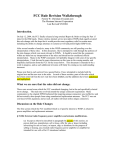Download FCC and User Manual Revisions FCC
Transcript
July 2010 RF/EMC Regulatory Update Dear Colleague, We have provided typical questions and answers that represent in most cases technical opinions with justification in FCC and CE requirements. The particulars of the product for certification must be considered with respect to the applicability of these questions and answers. We hope you find our update valuable and welcome your feedback if you have any special needs or questions. Call us at 703-689-0368 for your testing requirements. You can view archived issues of MultiPoint at our web site. FCC and User Manual Revisions QUESTION: We are a manufacturer of wireless devices, and would like to know the current FCC policy regarding User Manual revisions. Typically, at the time of our application for certification, our User Manual is in a draft form, not the final version. Our User Manuals are sometimes not finalized until several months after the grant is issued. Are we required to provide the FCC with a copy of the final user manual, and if so, how is this done? ANSWER: Per FCC §2.1033(c)(3), Application for certification must include the following: "A copy of the installation and operating instructions to be furnished the user. A draft copy of the instructions may be submitted if the actual document is not available. The actual document shall be furnished to the FCC when it becomes available." To replace the existing user manual exhibit on the FCC site you would need to have your TCB request that the FCC put the application into Audit Mode, so that the current manual exhibit could be superseded by the new, final manual. FCC - RF Exposure Rules for Battery Operated Portable Devices QUESTION: We manufacture battery-operated personal wireless routers. What is the FCC's position with respect to RF exposure compliance for these devices? ANSWER: There are currently many different battery-operated personal wireless routers that are approved for use with mobile RF exposure conditions. However, most advertisements indicate that these devices can be used in one's pocket under the FCC's portable RF exposure category. Though these devices are typically small in size, they do not qualify for the FCC's mobile RF exposure conditions though they are advertised as such, and are used by users as portable devices. If a Grantee's device was approved under the mobile RF exposure category, he may have to justify how mobile RF exposure conditions and limits apply to these devices. Available external ports and external antennas for these devices create RF exposure issues. To make matters worse, many of these devices are now capable of being connected to laptop computers through USB ports or similar connections. Simultaneous transmitting is also an issue as a portable wireless router requires multiple transmitters to operate simultaneously when a 3G cell phone and a portable Wi-Fi transmitter are connected together. In short, to determine the RF exposure compliance requirements for a battery-operated personal wireless router, your company or your test laboratory should send an inquiry to the FCC about the test requirements. This should eliminate certification delays and the possibility of a grant dismissal FCC - Device Tune-up Tolerances QUESTION: We are a cell phone manufacturer. How do we account for tune-up tolerances to determine SAR compliance? ANSWER: The FCC discussed how to account for device tune-up tolerances to determine SAR compliance in the April 2010 TCB workshop. Below is an excerpt from the workshop: Acceptable Test Samples: 1. a test device must be representative of the production units, with respect to §2.908; for example, it must be within specified a. production tolerances, electrical and mechanical tolerances, b. performance specifications etc. 2. the measured maximum output power must be within a. the specified tune-up tolerance range for production units 3. the test results must demonstrate compliance for all applicable limits, including maximum output power, RF exposure and various EMC requirements a. when results are extrapolated to the upper tune-up tolerance limit with respect to the maximum measured output power of the test sample, to ensure all production units are compliant to alleviate potential inconsistencies in determining compliance. The SAR measurements can be done with a test sample applying maximum output power within the required range of tune-up tolerance. However, compliance must be determined by scaling the results to the upper limit of the tune-up tolerance. Additionally, your company is responsible for ensuring that all production units are compliant. Device tuneup tolerances must be accounted for with respect to the measured SAR results and corresponding output power, to ensure compliance of all productions units to which the submitted tune-up procedures have been applied. If subsequent changes in tune-up procedures could void the original test results or create compliance concerns, a permissive change application may be required to address these issues. FCC - Cell Phone Questions QUESTION: We are a cell phone manufacturer and have the following questions: 1. What are the FCC requirements when cell phones are used as wireless routers? 2. Does the FCC's 5mm rationale test separation SAR requirement apply to personal battery- operated wireless routers? 3. What about products that have already received FCC approval? And future certifications? 4. For WiMax with one time slot and 2 antennas close together, is there a need to do a SAR zoom scan? ANSWER: 1. In those instances when a cell phone may be enabled through a software application to act as a wireless router, if such operating configurations have not been considered and evaluated for RF exposure compliance, the FCC will not approve the cell phone for this use. A permissive change application would be necessary to demonstrate RF exposure compliance to receive approval to activate such functions. 2. You or your test laboratory should send an inquiry to the FCC about the test requirements. These devices are small enough, and battery- operated, so that they can be used in any situation, such as in a pocket. If there is a specific wireless router with a specific design that would clearly support the mobile RF exposure category, contact the FCC to confirm if such exposure conditions are applicable. Otherwise, the 5mm separation is the starting point for the FCC to determine SAR test requirements. If a larger test separation distance can be justified, a KDB inquiry should be submitted to the FCC so a determination can be made. You will need to justify how the device qualifies for mobile RF exposure conditions. 3. If a product has already been approved, the FCC would handle it on a case-by-case basis, to determine if warning labels or other restrictions are applicable or feasible. For future certifications, an FCC inquiry regarding test requirements should be submitted in advance so that devices are tested correctly and there won't be a need for warning labels. The use of battery-operated personal wireless routers in a pocket would allow any side of the device to be in close proximity to the body. It is possible that based on the antenna and device design details, one could justify that specific side(s) may not need to be tested. 4. There is guidance for simultaneous transmission SAR measurements for antennas operating in the same frequency band within the same device. See section 5 of KDB 648474 (handset). The general procedures for volume scan are described in KDB 616217 (laptop). When both antennas operate simultaneously in the same frequency band, and when the peak SAR locations are very close to each other within the 1-g cube, a single zoom scan is sufficient. However, there are times where multiple zoom scans may be necessary if the peak SAR locations are separated by more than the dimensions of a 1-g cube. When the peak SAR locations are within the same 1g cube, then summing of the SAR distribution using a volume scan is not necessary. STANDARDS UPDATE EU: NEW CENELEC STANDARDS RECENTLY RELEASED This is a shortened list of the CENELEC standards published during the past month: • • • • • • • • • • EN 61162-3:2008/A1:2010 (07/09/2010) Maritime navigation and radiocommunication equipment and systems - Digital interfaces -- Part 3: Serial data instrument network EN 61558-2-5:2010 (07/09/2010) Safety of transformers, reactors, power supply units and combinations thereof -- Part 2-5: Particular requirements and tests for transformer for shavers, power supply units for shavers and shaver supply units EN 61400-24:2010 (07/09/2010) Wind turbines -- Part 24: Lightning protection EN 50498:2010 (07/09/2010) Electromagnetic compatibility (EMC) - Product family standard for aftermarket electronic equipment in vehicles EN 61000-4-3:2006/A2:2010 (07/09/2010) Electromagnetic compatibility (EMC) -- Part 4-3: Testing and measurement techniques - Radiated, radio-frequency, electromagnetic field immunity test EN 55011:2009/A1:2010 (07/09/2010) Industrial, scientific and medical equipment - Radio-frequency disturbance characteristics - Limits and methods of measurement EN 61000-4-18:2007/A1:2010 (07/09/2010) Electromagnetic compatibility (EMC) -- Part 4-18: Testing and measurement techniques - Damped oscillatory wave immunity test EN 62317-2:2010 (07/16/2010) Ferrite cores - Dimensions -- Part 2: Pot-cores for use in telecommunications, power supply, and filter applications EN 62537:2010 (07/16/2010) Interface for loudspeakers with digital input signals based on IEC 60958 EN 60335-1:2002/A14:2010 (07/16/2010) Household and similar electrical appliances - Safety -- Part 1: General requirements See CENELEC for additional information. EU: NEW IEC STANDARDS RECENTLY RELEASED This is a shortened list of the new IEC standards published during the past month: • • • • • • IEC 62479 (06/16/2010) Assessment of the compliance of low-power electronic and electrical equipment with the basic restrictions related to human exposure to electromagnetic fields (10 MHz to 300 GHz) IEC 62209-2 Corr.1 (06/21/2010) Corrigendum 1 - Human exposure to radio frequency fields from handheld and body-mounted wireless communication devices - Human models, instrumentation, and procedures - Part 2: Procedure to determine the specific absorption rate (SAR) for wireless communication devices used in close proximity to the human body (frequency range of 30 MHz to 6 GHz) CISPR 16-1-1-am1 (06/21/2010) Amendment 1 - Specification for radio disturbance and immunity measuring apparatus and methods - Part 1-1: Radio disturbance and immunity measuring apparatus Measuring apparatus CISPR 16-2-3-am1 (06/21/2010) Amendment 1 - Specification for radio disturbance and immunity measuring apparatus and methods - Part 2-3: Methods of measurement of disturbances and immunity Radiated disturbance measurements CISPR 16-SER (6/21/2010) Specification for radio disturbance and immunity measuring apparatus and methods - ALL PARTS CISPR 18-1 (6/24/2010) Radio interference characteristics of overhead power lines and high-voltage • • • • equipment - Part 1: Description of phenomena IEC 62368-1 Corr.1 (6/28/2010) Corrigendum 1 - Audio/video, information and communication technology equipment - Part 1: Safety requirements IEC 61558-2-5 (6/29/2010) Safety of transformers, reactors, power supply units and combinations thereof - Part 2-5: Particular requirements and test for transformer for shavers, power supply units for shavers and shaver supply units IEC 60335-2-90-am1 (7/22/2010) Amendment 1 - Household and similar electrical appliances Safety - Part 2-90: Particular requirements for commercial microwave ovens IEC 60745-2-5 (7/22/2010) Hand-held motor-operated electric tools - Safety - Part 2-5: Particular requirements for circular saws See IEC for additional information. EU: NEW ETSI STANDARDS RECENTLY RELEASED This is a shortened list of the new ETSI standards published during the past month: • • • • • • • • • • ETSI TR 102 799 V1.1.1 (June 2010) Electromagnetic compatibility and Radio spectrum Matters (ERM); Operation methods and principles for spectrum access systems for PMSE technologies and the guarantee of a high sound production quality on selected frequencies utilising cognitive interference mitigation techniques ETSI EN 302 498-1 V1.1.1 (June 2010) Electromagnetic compatibility and Radio spectrum Matters (ERM); Short Range Devices (SRD); Technical characteristics for SRD equipment using Ultra WideBand technology (UWB); Object Discrimination and Characterization Applications for power tool devices operating in the frequency band from 2,2 GHz to 8,5 GHz; Part 1: Technical characteristics and test methods ETSI EN 302 498-2 V1.1.1 (June 2010) Electromagnetic compatibility and Radio spectrum Matters (ERM); Short Range Devices (SRD); Technical characteristics for SRD equipment using Ultra WideBand technology (UWB); Object Discrimination and Characterization Applications for power tool devices operating in the frequency band from 2,2 GHz to 8,5 GHz; Part 2: Harmonized EN covering the essential requirements of article 3.2 of the R&TTE Directive ETSI TS 102 361-4 V1.3.1 (June 2010) Electromagnetic compatibility and Radio spectrum Matters (ERM); Digital Mobile Radio (DMR) Systems; Part 4: DMR trunking protocol ETSI TR 102 649-2 V1.2.1 (June 2010) Electromagnetic compatibility and Radio spectrum Matters (ERM); Technical characteristics of Short Range Devices (SRD) and RFID in the UHF Band; System Reference Document for Radio Frequency Identification (RFID) and SRD equipment; Part 2: Additional spectrum requirements for UHF RFID, non-specific SRDs and specific SRDs ETSI EN 300 086-1 V1.4.1 (June 2010) Electromagnetic compatibility and Radio spectrum Matters (ERM); Land Mobile Service; Radio equipment with an internal or external RF connector intended primarily for analogue speech; Part 1: Technical characteristics and methods of measurement ETSI EN 300 086-2 V1.3.1 (June 2010) Electromagnetic compatibility and Radio spectrum Matters (ERM); Land Mobile Service; Radio equipment with an internal or external RF connector intended primarily for analogue speech; Part 2: Harmonized EN covering the essential requirements of article 3.2 of the R&TTE Directive ETSI EN 301 783-1 V1.2.1 (July 2010) Electromagnetic compatibility and Radio spectrum Matters (ERM); Land Mobile Service; Commercially available amateur radio equipment; Part 1: Technical characteristics and methods of measurement ETSI EN 300 296-1 V1.3.1 (July 2010) Electromagnetic compatibility and Radio spectrum Matters (ERM); Land Mobile Service; Radio equipment using integral antennas intended primarily for analogue speech; Part 1: Technical characteristics and methods of measurement ETSI TS 137 113 V9.0.0 (July 2010) Digital cellular telecommunications system (Phase 2+); Universal Mobile Telecommunications System (UMTS); LTE; E-UTRA, UTRA and GSM/EDGE; MultiStandard Radio (MSR) Base Station (BS) Electromagnetic Compatibility (EMC) (3GPP TS 37.113 version 9.0.0 Release 9) See ETSI website for additional information. FCC: PROCEEDINGS TO SPUR MOBILE BROADBAND INVESTMENT IN MSS BANDS On July 15, 2010, the FCC adopted ET Docket No. 10-142, a Notice of Proposed Rulemaking (NPRM), outlining two proposals that would remove regulatory barriers to terrestrial (i.e. land-based) use and promote additional investments in the MSS bands, while retaining sufficient market-wide MSS capability. First, the NPRM proposes to add co-primary fixed and mobile allocations to the 2 GHz band. This allocation modification sets the stage for more flexible uses of the band by terrestrial services. Second, it proposes to expand existing secondary market policies and rules to address transactions involving the use of MSS bands for terrestrial services. This would create greater predictability in bands licensed for terrestrial mobile broadband service. Link to ET Docket No. 10-142 IC: NEW ISSUES OF SRSP-301.4 AND RSS-142 On July 3, 2010, Industry Canada released the following documents: • • Standard Radio System Plan 301.4 (SRSP-301.4), Issue 5: Technical Requirements for Fixed Radio Systems Operating in the Bands 1427-1452 MHz and 1492-1518 MHz, which sets out the minimum technical requirements for the efficient utilization of these bands; and Radio Standards Specification 142 (RSS-142), Issue 4: Narrowband Multipoint Communication Systems in the Bands 1429.5-1432 MHz and 1493.5-1496.5 MHz, which sets out certification requirements for radio transmitters and receivers of Narrowband Multipoint Communication Systems (N-MCS), including utility telemetry systems, in the bands 1429.5- 1432 MHz and 1493.5-1496.5 MHz. Changes to SRSP-301.4 include the following: • • • N-MCS sub-band 1429.5-1430.5 MHz has been extended to 1429.5-1432 MHz, adding six frequency blocks. Consequential changes have been made through the rest of the document; frequency coordination of new and modified N-MCS or SRS stations located in the band 1427-1432 MHz is required with systems deployed in the United States, subject to the provisions of Arrangement K between Canada and the United States (Section 8); and numerous additional updates and editorial corrections have been made. Changes to RSS-142 include the following: • • • The frequency band 1429.5-1430.5 MHz is extended to 1429.5-1432 MHz. The measurement method has been revised to allow the use of narrower resolution bandwidth for measuring unwanted emissions in the frequency range near the block edge. The requirement to include the instructions on how to set the lowest and highest channel carrier frequencies for each frequency block in the user manual has been removed. IC: NEW ISSUE OF RSS-141 On June 26, 2010, Industry Canada released Radio Standards Specification 141 (RSS-141), Issue 2, Aeronautical Radiocommunication Equipment in the Frequency Band 117.975-137 MHz, which sets out certification requirements for radio transmitters and receivers in the aeronautical mobile (R) service operating in the band 117.975-137 MHz for communication. CONTACT RHEIN TECH FOR YOUR INTERNATIONAL REGULATORY APPROVALS Rhein Tech Laboratories' worldwide homologation services offer the best strategy for gaining product approval in a large number of target countries. In addition, we reduce the number of emissions, immunity, and product safety tests required by defining the minimum subset of regulatory standards at the onset, thus reducing the time and cost to enter multiple target countries. We offer research and approvals in over 50 countries. ABOUT US RTL has provided EMC compliance engineering & testing services since 1988 and has a superior reputation with both the Federal Communications Commission and others in the industry. RTL provides testing services to meet the emissions, immunity, and safety requirements of the European EMC Directive and the EU R&TTE Directive, all FCC rules and regulations, VCCI (Japan), ACMA (Australia), and other international standards. A special thank you to those who have recommended and contributed articles for our newsletter. Please continue to forward new and interesting material to our attention: [email protected]. We respect the privacy of our customers and colleagues. If you would like to cancel your MultiPoint updates, please follow the instructions at the end of this email. The information in the MultiPoint update is subject to change without notice. Learn More email: [email protected] phone: 703-689-0368 web: http://www.rheintech.com Last revised: July 26, 2010 Rhein Tech Laboratories, Inc. | 360 Herndon Pkwy, #1400 | Herndon | VA | 20170






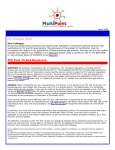
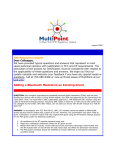
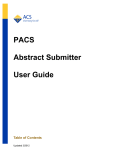
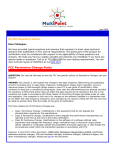
![[4910-13-U] DEPARTMENT OF TRANSPORTATION Federal](http://vs1.manualzilla.com/store/data/005730800_1-83b69f38eee92750e4a30066087ffbc6-150x150.png)
